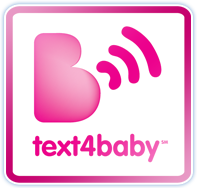Ear infections in children can be troubling experiences for parents, especially when they occur frequently. They’re also the most common reason children are prescribed antibiotics.
Understanding what causes ear infections, how to detect them, and what can be done to cure or prevent them is essential knowledge for every parent.
What Causes Ear Infections
Ear infections are caused by a bacteria or virus in the middle ear (usually a result of another illness) that leads to swollen nasal passages and congestion. This occurs more frequently in children because their Eustachian tubes (the tubes that connect the nose to the ear) are shorter and less angled. This allows bacteria and virus to easily travel from the nose to the ear. As children grow, the Eustachian tube becomes longer and more vertical, making ear infections less common.
How Do I Know if My Child Has an Ear Infection?
If your child has a cold and is complaining of ear pain, he or she probably has an ear infection. Diagnosis is not as easy when dealing with younger children who can’t communicate well. Children less than one year old are unable to locate the specific pain point and may pull or bat at their ears when they experience pain from teething. However, babies may tug at their ears simply because they located a new body part. If you’re unsure if your little one has an ear infection, look for two or more of these symptoms:
- A cold – nasal congestion that turns from clear to green or yellow just before ear pain begins
- Frequent fussiness throughout the day
- Sudden increase in fussiness from a cold
- Ear pain or hearing loss
- Low grade fever (101º – 102º)
- Discomfort when lying flat
- Blood or pus draining from the ear
Healing an Ear Infection
Accurately diagnosing and treating an ear infection is important. Contact your child’s doctor if symptoms last more than a day. A health care professional may recommend one or more of the following:
- Ibuprofen or Acetaminophen for pain relief
- Warm compresses
- Several drops of warm (not hot) olive or vegetable oil in the ear
- Anesthetic ear drops (available by prescription)—do not put anything in the ear if there is ear drainage
- Antibiotics; a 10-day dose is the typical recommendation
Some parents wonder if antibiotics are necessary. They aren’t always required but they are helpful for many reasons. Letting an ear infection heal naturally usually takes four to seven days and subjects your child to some discomfort. Antibiotics relieve pain while fighting the bacteria that caused the infection. Children usually feel relief after one or two doses, which will also put their parents at ease.
To learn more or to schedule an appointment for your child, contact Pediatric Associates of Franklin.
The information and content on our website should not be used as a substitute for medical treatment or advice from your doctor.




